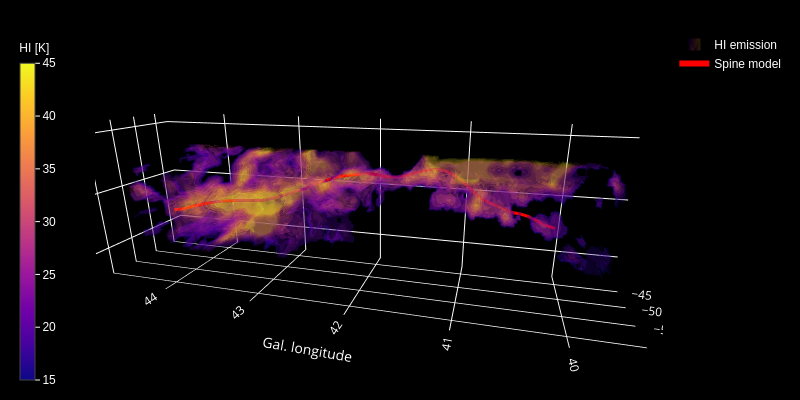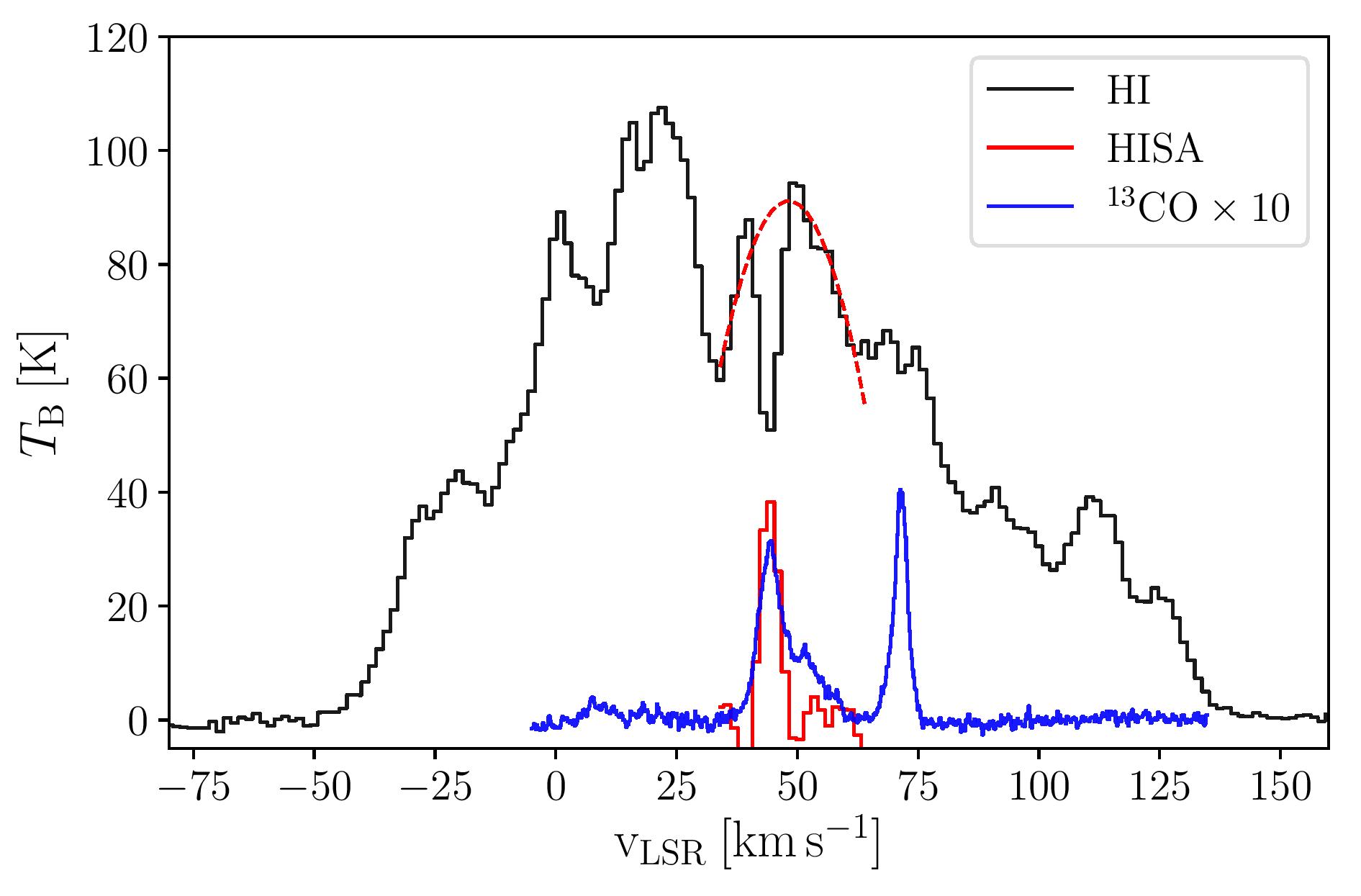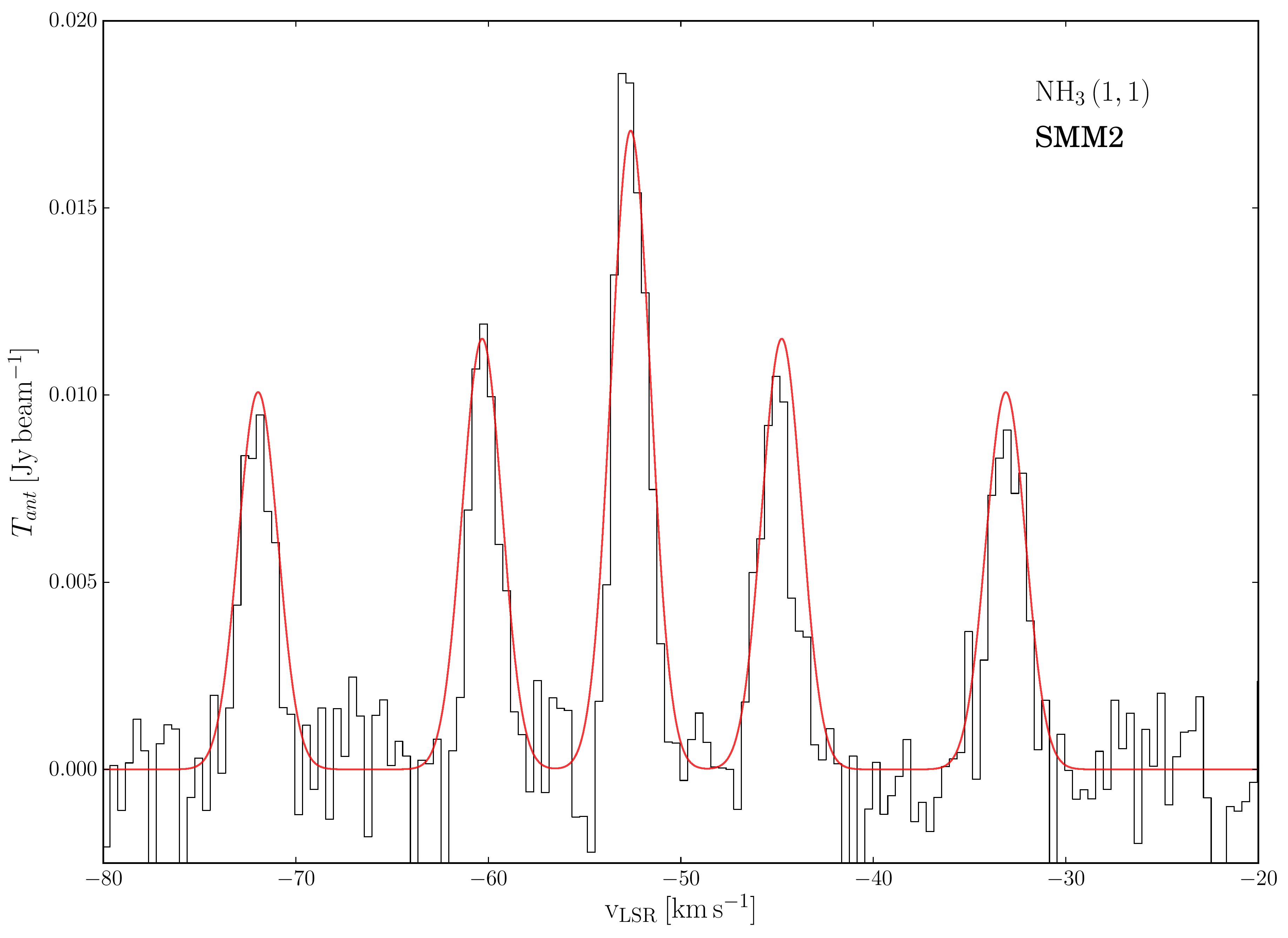Willkommen!


My work mainly focuses on the physics of the atomic phase of the interstellar medium. We therefore conduct HI emission and absorption studies to explore the processes leading up to the formation of molecular clouds, the sites of star formation.
My research interests are atomic/molecular cloud formation, filaments, high-mass star formation, and magnetic fields.
Here we present one particular filament of atomic hydrogen (HI) that stands out because of its mere size. "Maggie", named after el Río Magdalena, the largest river in Colombia, is a largely atomic elongated gas cloud that has a mass of more than half a million solar masses.
While in recent years astronomers have studied many molecular filaments and clouds, the sites of star formation, Maggie shows only little detection of molecular gas. Given its length of ≈1200 pc (~3900 light years), Maggie is the largest coherent object in the Milky Way that we know of. Maggie's formation history and whether it is an anomaly or an object of regular occurrence is still not understood.

Check out the paper here and the accompanying press release here!
The HI/OH Recombination line survey of the inner Milky Way (THOR; Beuther et al. 2016, Wang et al. 2020a) is a large survey of the inner Galactic plane. The program includes observations of the HI 21cm line, four OH lines, 19 radio recombination lines, and the continuum emission between 1 and 2 GHz. The THOR observations cover the inner portion of the Milky Way's midplane at Galactic longitudes between 17 and 67 degrees and Galactic latitudes between -1.25 and +1.25 degrees.
My work mainly relies on the atomic hydrogen (HI) data. The HI data have an angular resolution of 40″ (i.e. we can resolve angles that are just 2% of the Moon's diameter in the sky!). To see what the THOR-HI observations look like, check out this beautiful rendition by one of our collaborators. After zooming into the coverage of the THOR survey, the video shows the atomic hydrogen emission as the view moves along the Galactic longitude axis. At the same time, it moves back and forth through the entire spectral range of the data.

HI self-absorption, also referred to as "HISA", occurs when a cold gas cloud of atomic hydrogen (HI) is located in front of a warmer HI cloud. We therefore observe the cold cloud in absorption against the brighter background. By measuring HISA, we can disentangle individual clouds from the otherwise ubiquitous HI gas that creates "messy" spectra, mostly due to the Galactic rotation. Figure 1 shows an example spectrum of the HI emission toward the inner Galactic plane at a Galactic longitude of ℓ≈20°. Using first and second order polynomial fits to the baselines of the absorption features (red dashed), we can isolate HISA spectra (red). We use molecular line tracers, such as 13CO (blue), to locate HISA in the spectra.
We studied two molecular clouds by means of HI self-absorption that had already been identified as Giant molecular filaments (GMFs). For this analysis, we made use of THOR HI data with an angular and spectral resolution of 40″ and 1.5 km s-1, respectively. By investigating HISA, we can trace part of the cold atomic gas and take a closer look at how this correlates with the molecular gas of the filament. This may help us understand how molecular clouds form out of the atomic gas phase of the interstellar medium.
Check out the paper here!

Here I present the research conducted within the scope of my Bachelor thesis. We have investigated the kinematics and temperature of two high-mass gas clumps using ammonia observations. Ammonia (NH3) is a suitable molecule to trace very cold (T ~ 20 K) and dense (n >104 cm-3) gas. By observing different metastable lines of the NH3 hyperfine structure, which are well detectable with radio telescopes (wavelength λ≈1.3 cm), we can determine the underlying kinematics and temperature of the clumps.

Jonas Syed
| syed [at] mpia.de | |
| https://www.researchgate.net/profile/Jonas-Syed | |
| https://www.linkedin.com/in/jonas-syed-945902231 | |
| https://github.com/astrojoni89 | |
| https://orcid.org/0000-0003-4322-8120 |